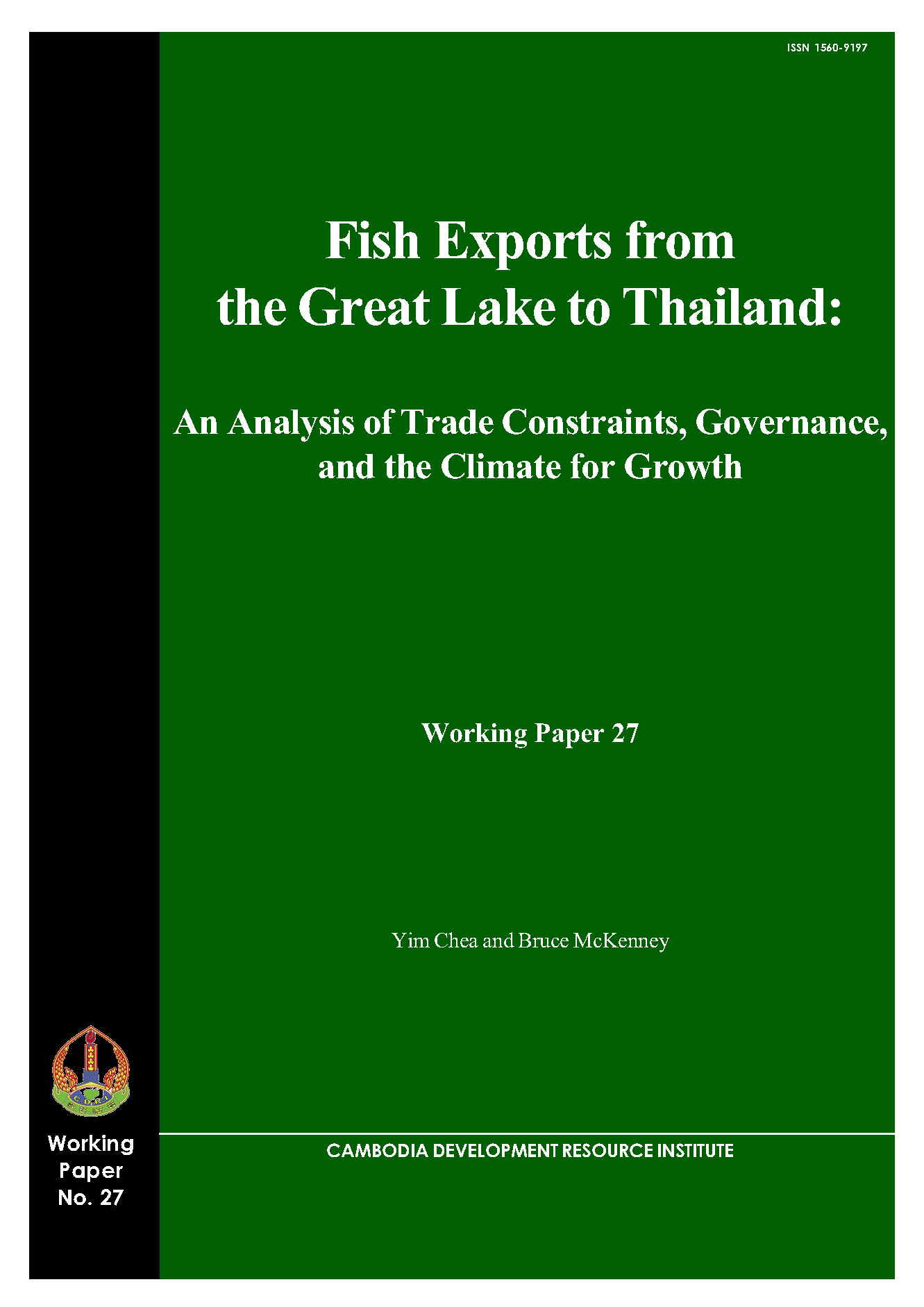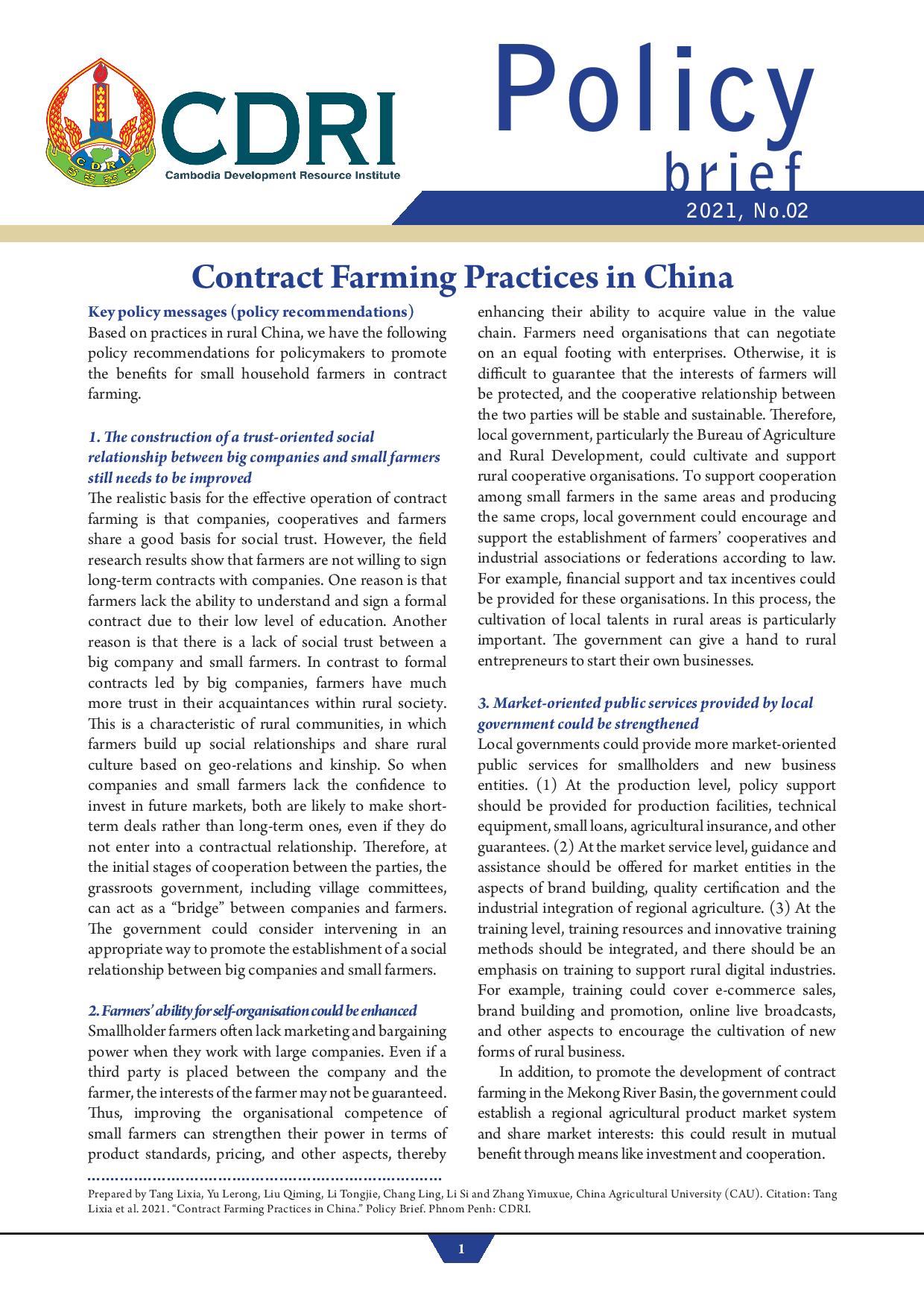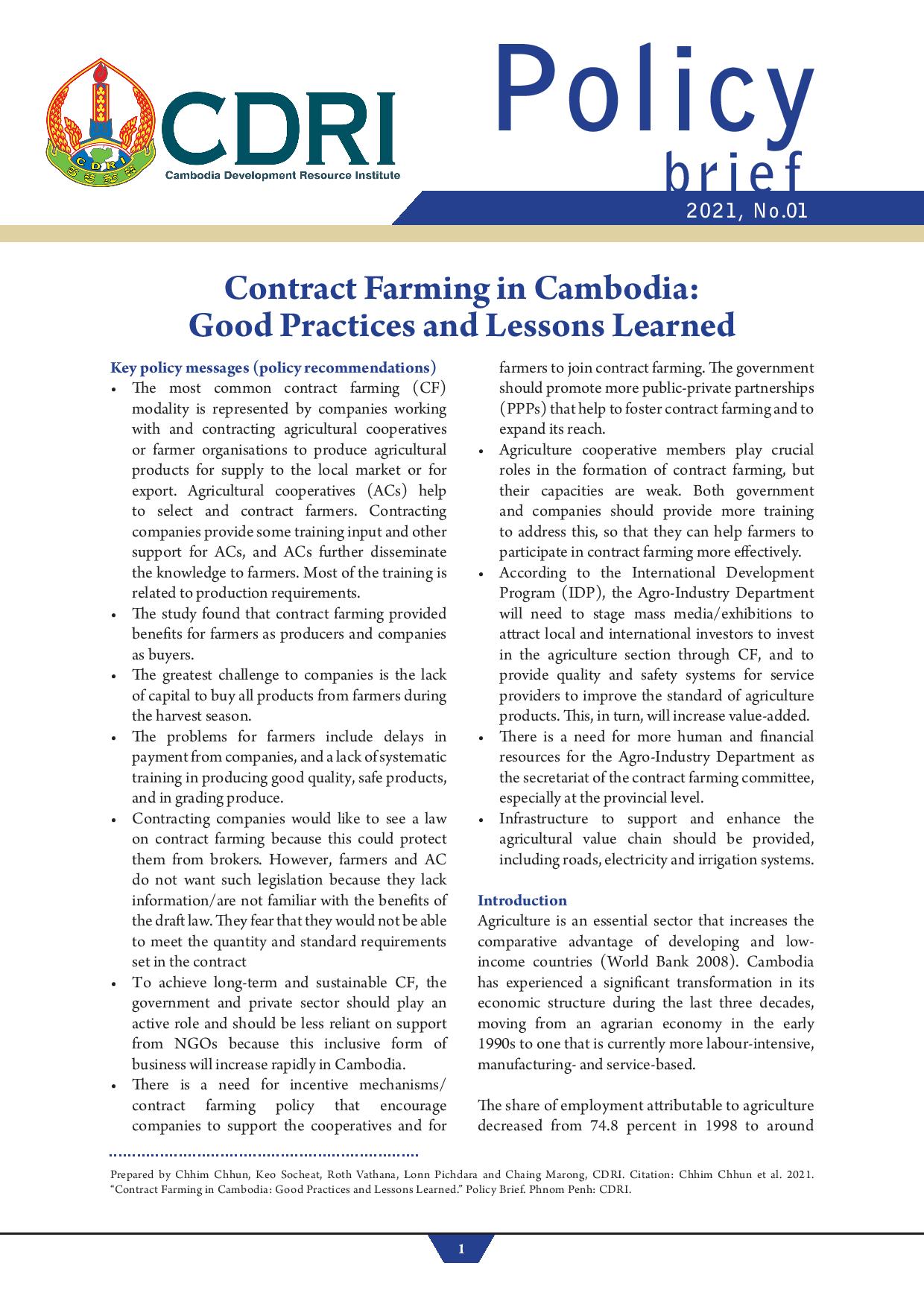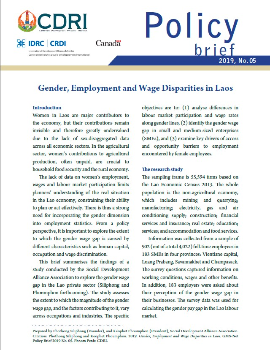
Fish Exports from the Great Lake to Thailand: An Analysis of Trade Constraints, Governance, and the Climate for Growth
Keyword: Fisheries sector, Tonle Sap, fish trade and export, market integration, livelihoods and policy, constraints
Khmer PDF (2)
Abstract/Summary
Fisheries play a vital role in supporting rural livelihoods throughout Cambodia, but especially around the Tonle Sap (Great Lake) area where more than one million people depend on the fisheries sector for employment, income, and food security. With large surpluses of fish caught during peak fishing periods, fish trade and export is critical to income growth in the sector. Presently, fresh and processed fish are traded widely within Cambodia, exported in significant quantities to neighbouring countries, and in some instances exported to more distant markets. However, beyond this general picture, much remains unclear about fish marketing and export.
With an inland fisheries catch of more than 400,000 tonnes per year, Cambodia’s fisheries sector has been targeted as an important sector for export promotion. This promotion is occurring within the context of broader regional and international trade agreements, namely the ASEAN Free Trade Agreement and World Trade Organisation accession. While regional and international market integration is intended to spur “pro-poor” trade, to be effective, market integration and trade efficiencies will also need to be improved domestically, especially within and from rural areas.
Constraints on fish trade and export can negatively affect the livelihoods of the many small- and medium-scale fishers supplying exporters, as well as others working in the sector. When costs, fees, and risks associated with fish export make it difficult for exporters to earn a profit, they must reduce prices offered to fish suppliers in order to stay in business, which in turn can reduce incomes throughout the sector. Conversely, where policy changes can increase efficiencies and lower costs for trade and export, much of the benefit would be passed on to fishers (through higher prices for their fish) because exporters are intensely competing for fish supply.
To assess the current conditions under which fish are exported from Cambodia, the Natural Resources and Environment Programme of the Cambodia Development Resource Institute carried out a fish exports study from November 2002 to June 2003, with much of the fieldwork conducted during an intensive period in January 2003. The study focused on fish exports from the Great Lake to Thailand (via Poipet). Information and data were collected through more than 70 semi-structured interviews with exporters, wholesalers, traders, fishers, and government officials. In addition, researchers made three “follow the fish” trips with export shipments to directly observe trade conditions and crosscheck information gathered in interviews. Key objectives included identifying the typical market structure, describing credit and financing arrangements, assessing trade and export constraints, quantifying transaction costs (including fees), describing the official regulatory framework and actual practices, and identifying policy recommendations.



